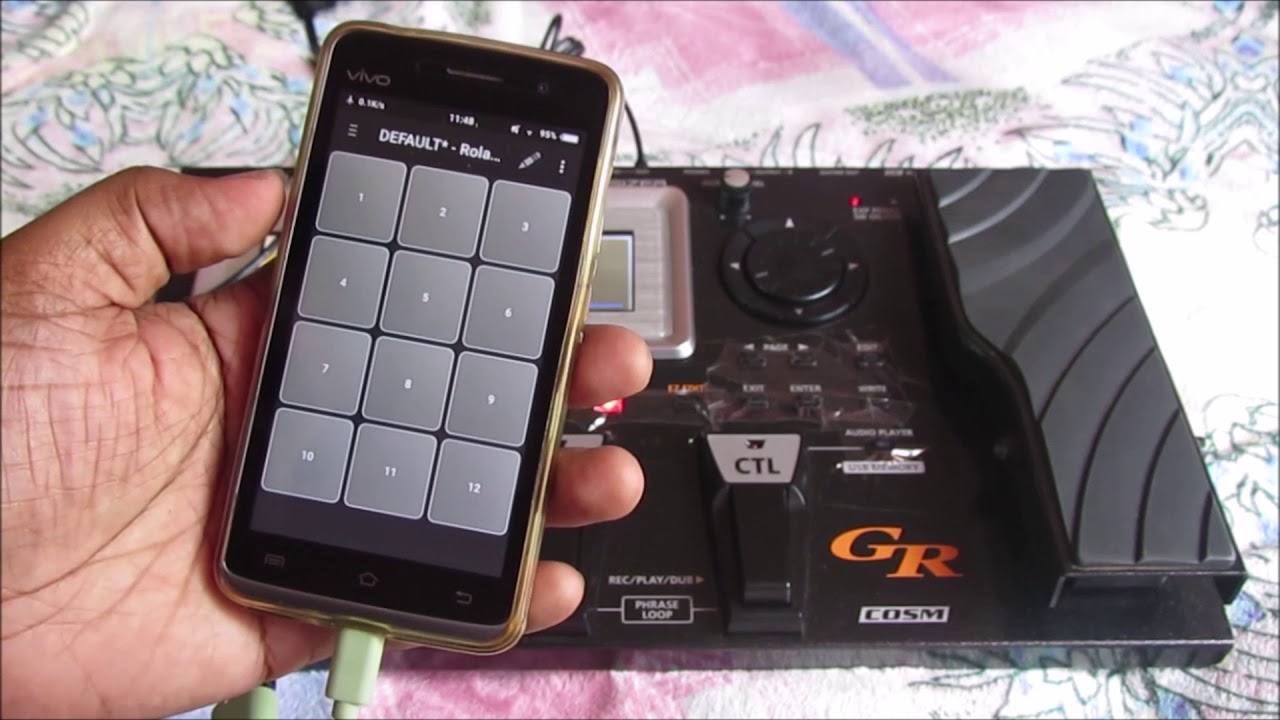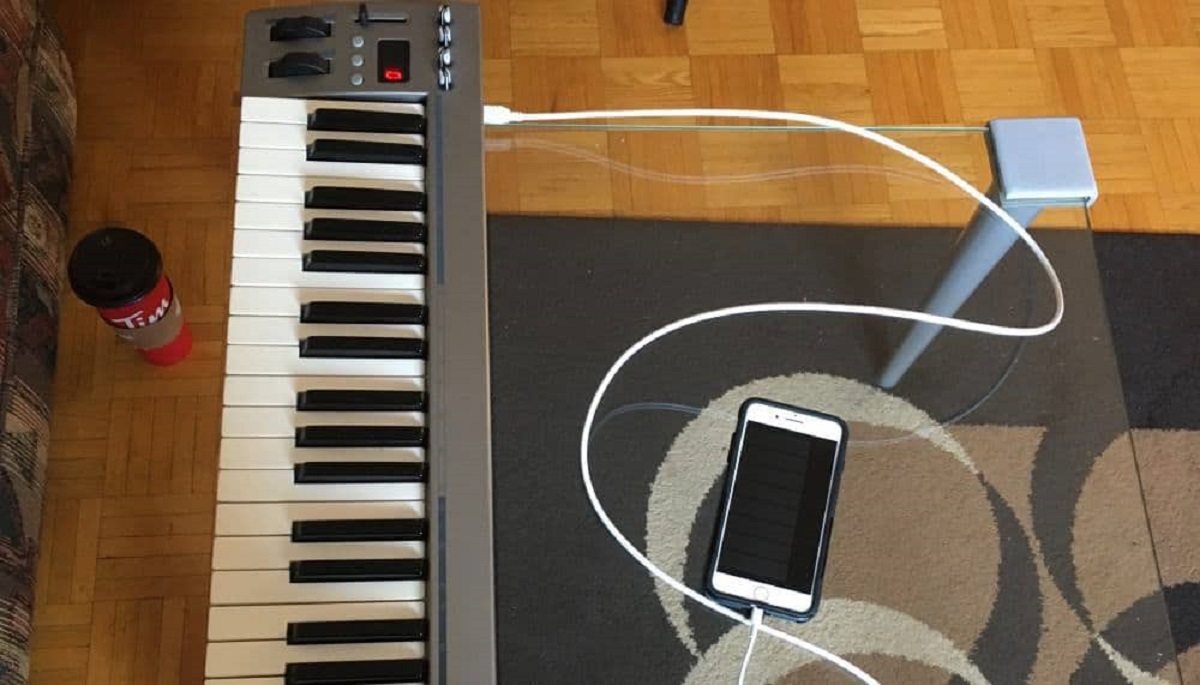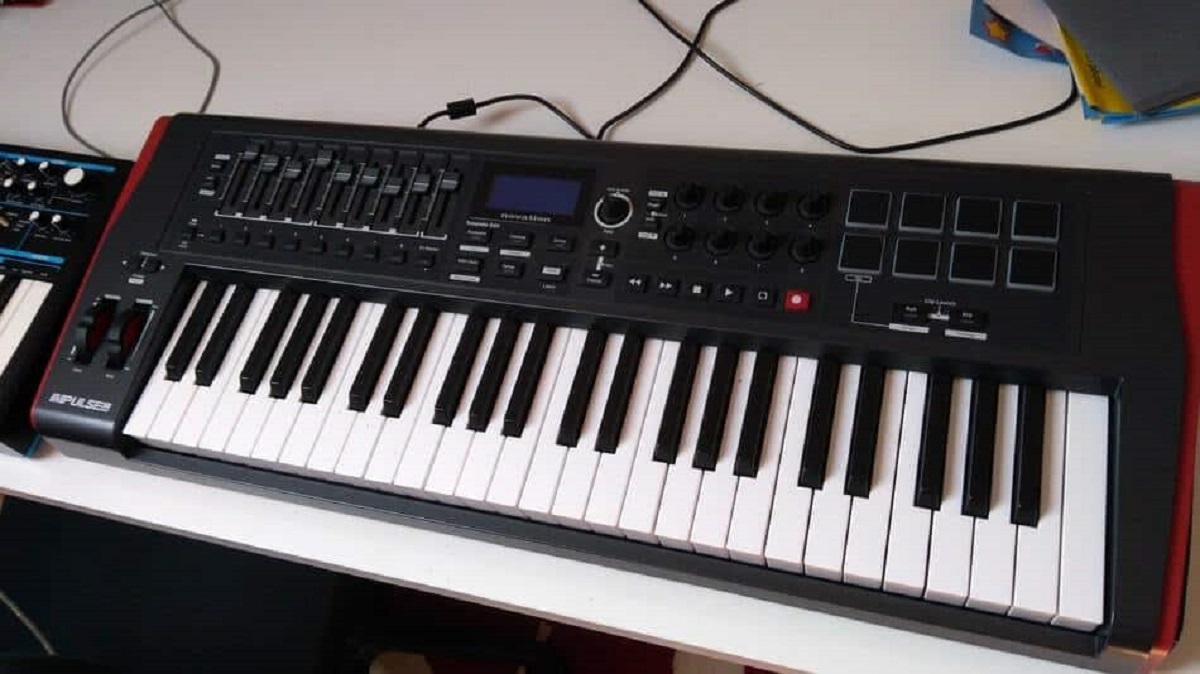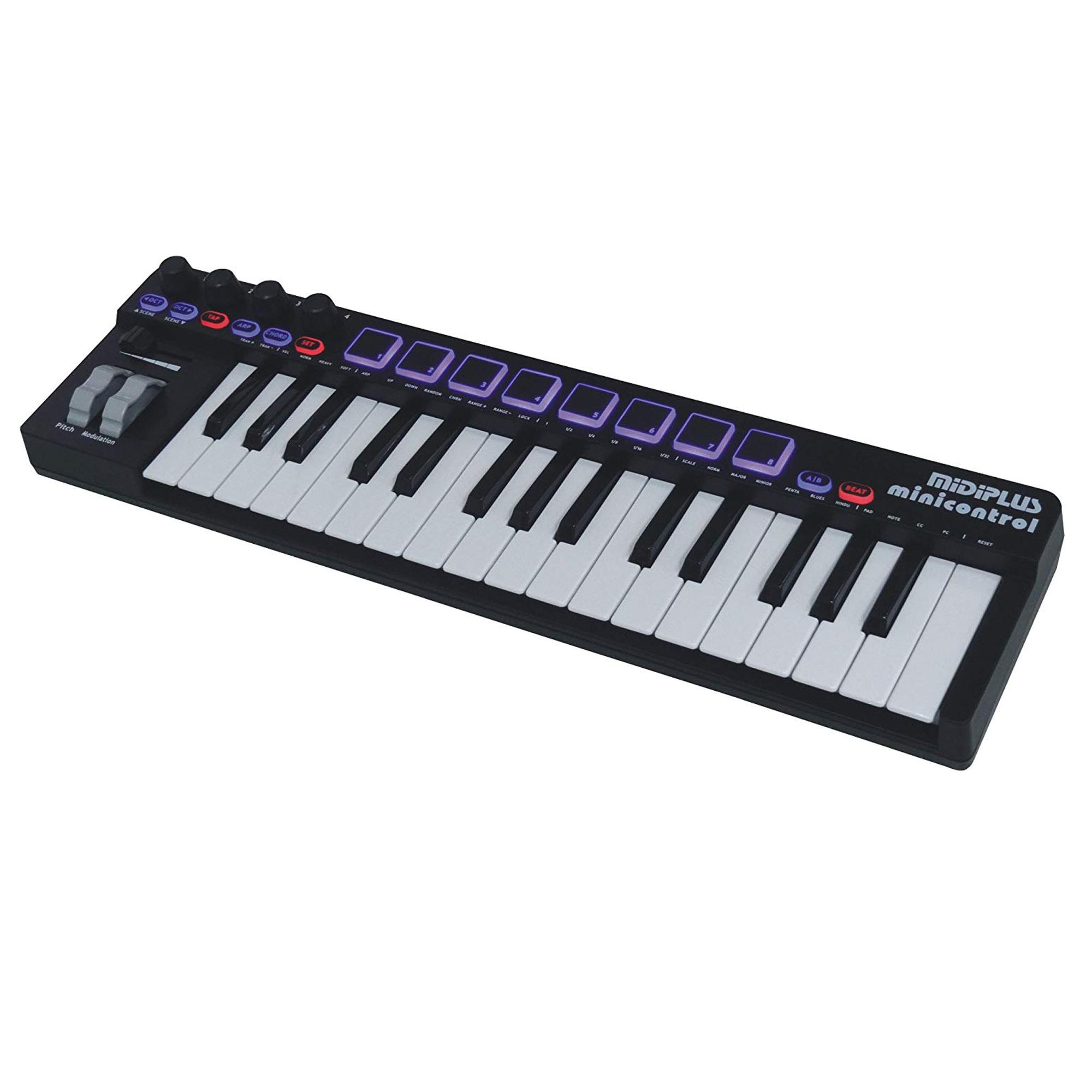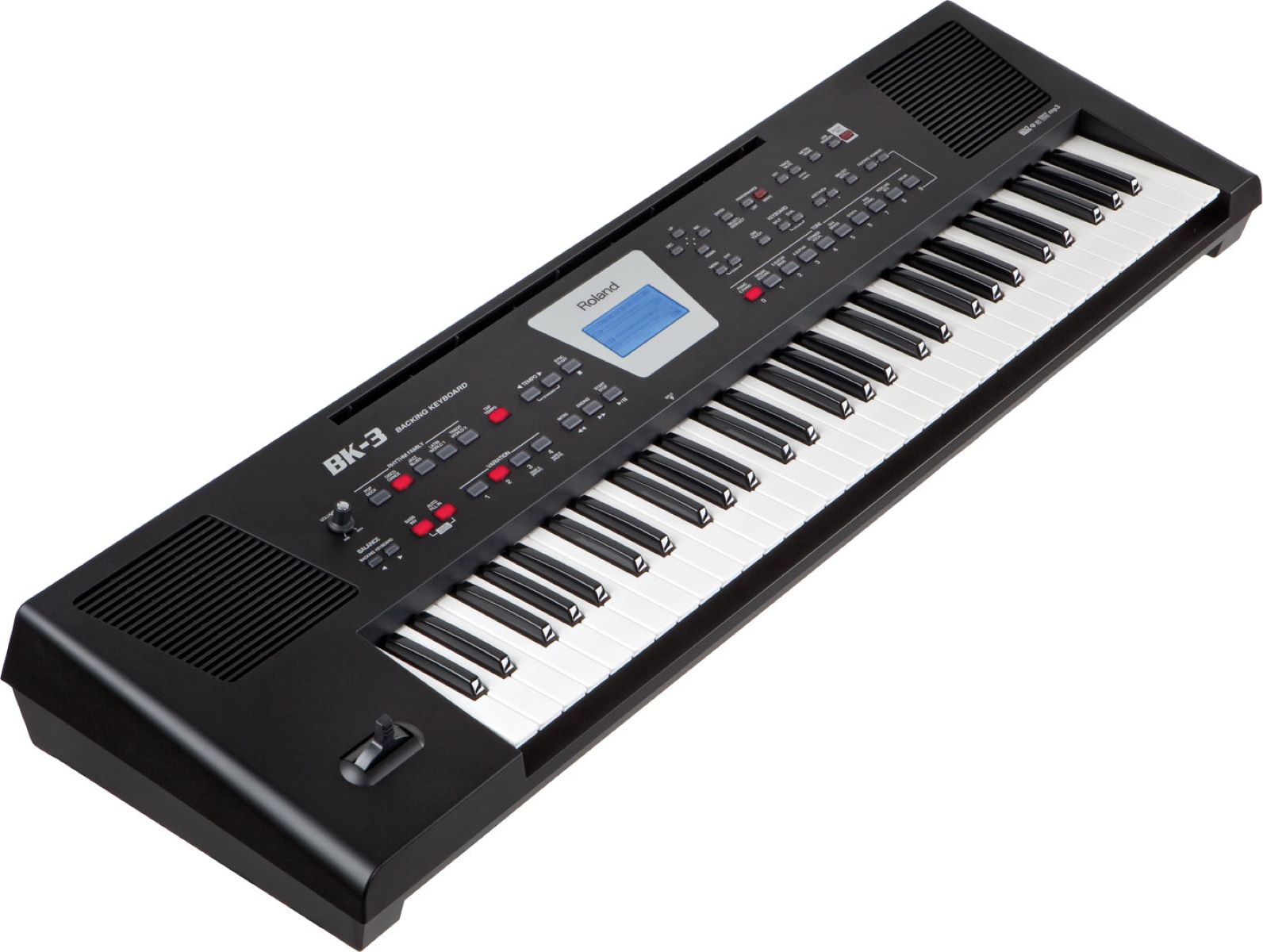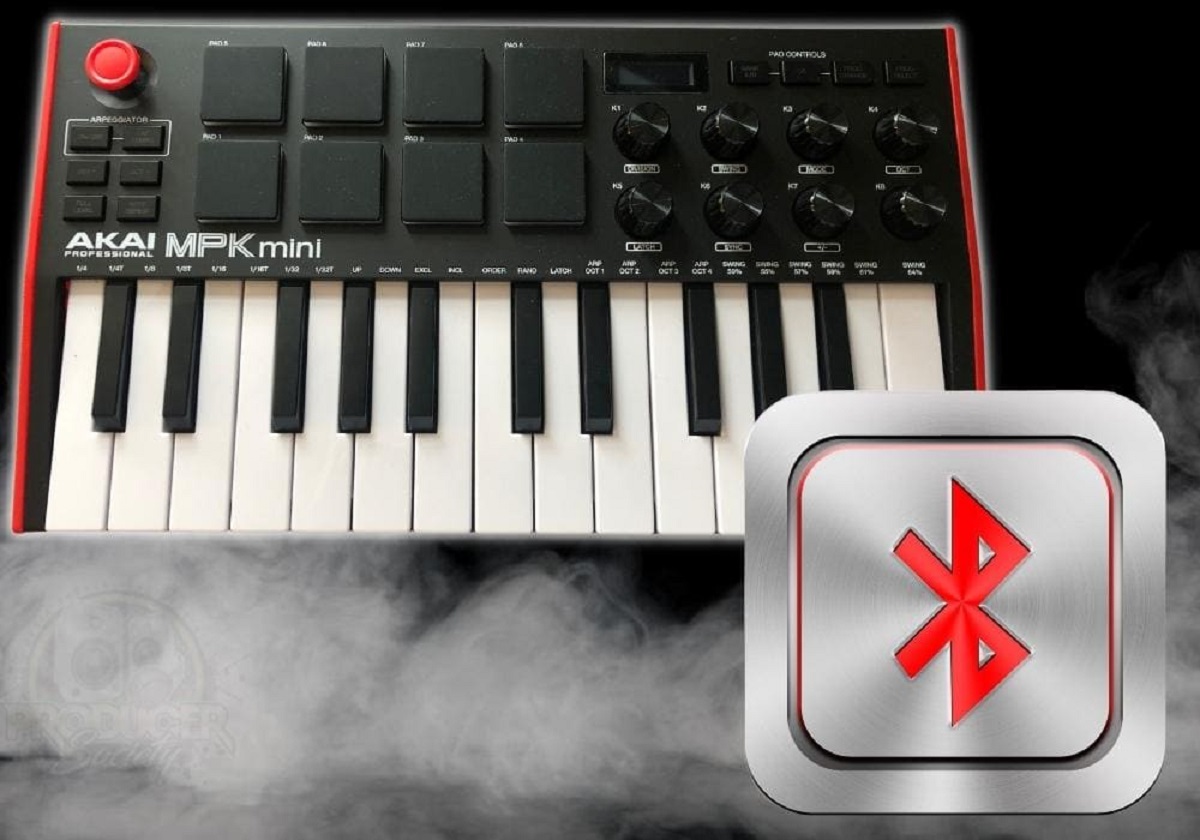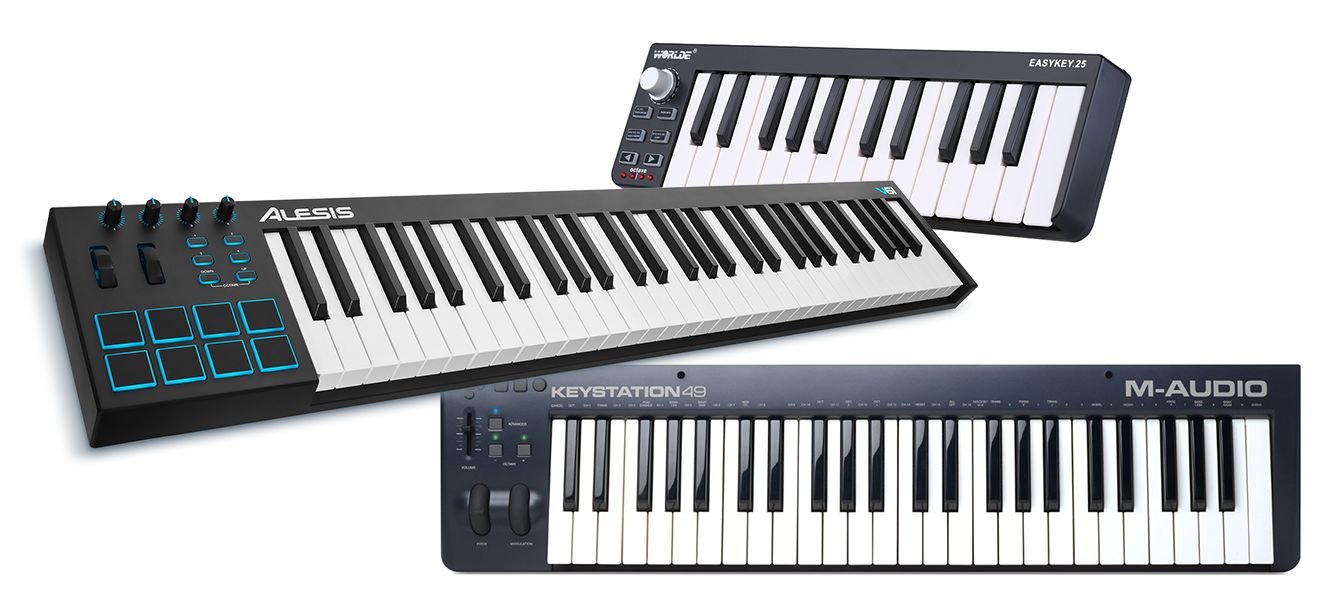Introduction
In the realm of music production and performance, MIDI keyboards are indispensable tools for creating and manipulating sounds. These versatile devices allow musicians and producers to trigger and control various musical elements within digital audio workstations (DAWs) and other MIDI-compatible hardware and software. However, investing in a physical MIDI keyboard may not be feasible for everyone, especially for those who are just starting out or prefer a more portable solution.
Fortunately, with the advancements in technology, it is now possible to transform a smartphone into a MIDI keyboard, offering a cost-effective and convenient alternative. By leveraging the capabilities of a smartphone and utilizing dedicated MIDI keyboard apps, individuals can tap into a world of musical creativity without the need for a traditional MIDI controller.
In this guide, we will explore the process of using a smartphone as a MIDI keyboard, providing step-by-step instructions and insights to help you unleash the potential of this innovative approach. Whether you are a music enthusiast, a budding producer, or a seasoned musician seeking a portable solution, harnessing the power of a smartphone as a MIDI keyboard can open up new avenues for musical expression and production.
By the end of this tutorial, you will have a comprehensive understanding of how to set up and utilize your smartphone as a MIDI keyboard, empowering you to seamlessly integrate it into your music-making endeavors. Let's embark on this journey to unlock the transformative capabilities of your smartphone and elevate your musical experience to new heights.
What is a MIDI Keyboard?
A MIDI keyboard, short for Musical Instrument Digital Interface keyboard, is a versatile input device that enables musicians, producers, and composers to interact with digital audio workstations (DAWs), virtual instruments, and other MIDI-compatible hardware and software. Unlike traditional keyboards, MIDI keyboards do not produce sound on their own; instead, they transmit MIDI data, such as note triggers, velocity, and modulation, to external devices, allowing for expressive and dynamic control over musical elements.
These keyboards typically feature piano-style keys, ranging from compact two-octave models to full-sized 88-key versions, providing a familiar playing experience for pianists and keyboardists. Additionally, MIDI keyboards often incorporate a variety of performance controls, such as knobs, sliders, and pads, offering tactile manipulation of parameters like volume, pitch, and effects.
One of the key advantages of MIDI keyboards is their ability to facilitate seamless integration with DAWs and virtual instruments, making them essential tools for music production, composition, and live performance. By connecting a MIDI keyboard to a computer or MIDI-compatible hardware, musicians can harness its expressive capabilities to craft intricate melodies, layer rich harmonies, and sculpt dynamic soundscapes.
Furthermore, MIDI keyboards serve as versatile creative hubs, enabling users to explore a vast array of virtual instruments, sample libraries, and sound design tools. Whether it’s emulating classic synthesizers, triggering realistic orchestral sounds, or sculpting electronic textures, the flexibility of MIDI keyboards empowers musicians to realize their sonic visions with precision and artistry.
In essence, MIDI keyboards act as conduits for musical expression, bridging the gap between traditional instrumental performance and the boundless possibilities of digital music production. Their intuitive interface, expressive capabilities, and seamless integration make MIDI keyboards indispensable assets for musicians and producers seeking to elevate their creative endeavors.
Using a Smartphone as a MIDI Keyboard
With the increasing prevalence of smartphones and their ever-expanding capabilities, leveraging these pocket-sized powerhouses as MIDI controllers has become a compelling option for music enthusiasts and professionals alike. Transforming a smartphone into a MIDI keyboard offers a portable, cost-effective, and versatile solution for triggering and manipulating musical elements within digital audio workstations (DAWs) and MIDI-compatible software and hardware.
By harnessing the processing power and touch interface of smartphones, users can access a myriad of MIDI keyboard apps that replicate the functionality of traditional MIDI controllers. These apps often feature piano-style layouts, customizable interfaces, and a range of performance controls, providing a familiar and intuitive playing experience while on the go.
Furthermore, the integration of smartphone sensors, such as accelerometers and gyroscopes, can add an extra dimension to the MIDI keyboard experience, allowing for innovative gestural control over parameters like pitch bend, modulation, and expression. This fusion of touch-based interaction and motion sensing capabilities enhances the expressive potential of smartphone MIDI keyboards, enabling users to infuse their performances with nuanced articulation and dynamic nuances.
Moreover, the portability of smartphones empowers musicians to carry a compact MIDI controller in their pocket, ready to unleash creative inspiration anytime, anywhere. Whether in a studio, on stage, or during travel, the ability to transform a smartphone into a MIDI keyboard transcends the limitations of traditional hardware, offering unprecedented flexibility and convenience.
As the boundaries between technology and creativity continue to blur, the utilization of smartphones as MIDI keyboards represents a convergence of innovation and accessibility, democratizing the tools of music production and performance. Whether you’re a seasoned producer seeking a portable sketchpad for musical ideas or an aspiring musician looking to explore the realm of MIDI control, the potential of using a smartphone as a MIDI keyboard is as boundless as the imagination itself.
Step 1: Downloading a MIDI Keyboard App
The first step in utilizing your smartphone as a MIDI keyboard involves downloading a dedicated MIDI keyboard app from the application store corresponding to your device’s operating system. Whether you’re using an iOS or Android device, a plethora of MIDI keyboard apps are available, offering varying features, layouts, and customization options to suit your musical preferences and workflow.
When browsing for MIDI keyboard apps, consider factors such as key layout, customization capabilities, and additional performance controls. Some apps emulate traditional piano keyboards, complete with octave shifting and velocity sensitivity, while others offer innovative interfaces and gesture-based controls for a unique playing experience.
Additionally, explore app functionalities such as MIDI mapping, which allows you to assign specific MIDI messages to on-screen elements, enabling personalized control over parameters within your music production setup. Look for apps that support MIDI over Bluetooth or Wi-Fi for seamless connectivity with your digital audio workstation (DAW) or MIDI-compatible hardware.
Before downloading a MIDI keyboard app, it’s beneficial to read user reviews, explore demo videos, and consider compatibility with your specific smartphone model and operating system version. This research ensures that you select an app that aligns with your musical needs and integrates smoothly with your existing setup.
Once you’ve identified a suitable MIDI keyboard app, proceed to download and install it on your smartphone, following the standard procedures for app acquisition from the respective application store. After installation, familiarize yourself with the app’s features, settings, and customization options, preparing to embark on a musical journey empowered by the capabilities of your smartphone as a MIDI keyboard.
Step 2: Connecting to a DAW or MIDI-Compatible Device
Once you have downloaded and familiarized yourself with a MIDI keyboard app on your smartphone, the next step is to establish a connection between your device and a digital audio workstation (DAW) or any MIDI-compatible hardware or software that you intend to control with the smartphone MIDI keyboard. This connection enables the transmission of MIDI data from the smartphone to the receiving device, allowing for real-time interaction and control over musical elements.
If you plan to connect your smartphone MIDI keyboard to a computer-based DAW, such as Ableton Live, Logic Pro, or FL Studio, you can utilize various methods for establishing the link. One common approach involves using a USB cable and an appropriate adapter to connect your smartphone to the computer, effectively bridging the MIDI communication between the devices.
Alternatively, some MIDI keyboard apps support wireless connectivity via Bluetooth or Wi-Fi, enabling seamless integration with MIDI-compatible software running on your computer. By leveraging wireless technology, you can enjoy the freedom of movement and flexibility while controlling your DAW, making it ideal for live performances, studio setups, and collaborative music-making environments.
For those aiming to connect the smartphone MIDI keyboard to standalone MIDI hardware, such as synthesizers, drum machines, or sound modules, the process involves utilizing the smartphone’s MIDI output capabilities. This typically requires an appropriate adapter or interface to convert the smartphone’s output into standard MIDI signals, which can then be routed to the receiving MIDI devices for control and playback.
It’s important to ensure that the MIDI settings on both the smartphone and the receiving device are configured appropriately to facilitate seamless communication. This includes specifying MIDI input and output ports, channel assignments, and any additional mapping or configuration required to align the smartphone MIDI keyboard with the target device’s parameters.
By successfully establishing the connection between your smartphone MIDI keyboard and the desired DAW or MIDI-compatible hardware, you are poised to unleash the expressive potential of your smartphone as a versatile MIDI controller, ready to shape and sculpt musical creations with precision and fluidity.
Step 3: Configuring the MIDI Keyboard App
After establishing the connection between your smartphone and the digital audio workstation (DAW) or MIDI-compatible device, the next crucial step is to configure the MIDI keyboard app to align with your desired performance and control preferences. This configuration process involves customizing settings, mapping controls, and optimizing the app’s functionality to seamlessly integrate with your music production workflow.
Upon launching the MIDI keyboard app on your smartphone, navigate to the settings or preferences section to access a range of configurable parameters. These settings may include options for adjusting key sensitivity, enabling velocity control, and specifying MIDI channel assignments to ensure compatibility with the receiving device’s input requirements.
Furthermore, explore the app’s customization capabilities, which often encompass the ability to assign specific MIDI messages to on-screen controls, such as knobs, sliders, and buttons. This feature empowers you to tailor the app’s interface to align with the parameters and functions within your DAW or MIDI-compatible software, fostering a personalized and intuitive control experience.
If the MIDI keyboard app supports gesture-based controls utilizing the smartphone’s sensors, such as accelerometers and gyroscopes, take the time to configure these features to enhance the expressiveness and dynamics of your performances. Gesture control settings may include options for pitch bend, modulation, and aftertouch, allowing for nuanced manipulation of musical elements through intuitive motion-based interactions.
Additionally, some MIDI keyboard apps offer integration with external hardware controllers, enabling users to expand the app’s functionality by connecting physical MIDI controllers, such as MIDI keyboards, pad controllers, or control surfaces. This integration allows for a hybrid control setup, combining the tactile response of physical controllers with the versatility of the smartphone MIDI keyboard app.
As you configure the MIDI keyboard app to suit your musical requirements, consider experimenting with different settings, control mappings, and performance techniques to discover the optimal configuration for your creative endeavors. By tailoring the app’s functionality to align with your unique musical expression, you can harness the full potential of your smartphone as a dynamic and responsive MIDI controller, ready to shape and sculpt musical compositions with precision and artistry.
Step 4: Playing and Recording with the Smartphone MIDI Keyboard
With the MIDI keyboard app configured and the connection established between your smartphone and the digital audio workstation (DAW) or MIDI-compatible device, you are now ready to embark on the exhilarating journey of playing and recording music using the smartphone MIDI keyboard. This step encompasses the practical application of your smartphone as a versatile MIDI controller, allowing you to trigger, manipulate, and record musical performances with seamless integration into your music production setup.
Begin by launching your DAW or MIDI-compatible software on the receiving device, ensuring that the MIDI input from your smartphone is recognized and properly configured within the software’s settings. Once the MIDI communication is established, select a virtual instrument or sound module within your DAW to assign to the smartphone MIDI keyboard, enabling you to trigger and control the selected musical elements.
As you play the smartphone MIDI keyboard, explore the expressive capabilities at your fingertips, leveraging features such as velocity sensitivity, aftertouch, and gesture-based controls to infuse your performances with dynamic nuances and articulation. Experiment with different playing techniques, such as chordal accompaniment, melodic leads, and rhythmic patterns, utilizing the full range of the smartphone MIDI keyboard’s interface to craft intricate and emotive musical passages.
Whether you’re composing melodies, laying down harmonies, or sculpting intricate soundscapes, the smartphone MIDI keyboard empowers you to realize your musical vision with precision and fluidity. Its portable nature allows for spontaneous creativity, enabling you to capture musical ideas and inspirations on the go, seamlessly integrating them into your larger compositions and arrangements.
When you’re ready to record your performances, engage the recording functionality within your DAW, capturing the expressive dynamics and musical gestures articulated through the smartphone MIDI keyboard. Whether it’s a live improvisation, a meticulously crafted composition, or a collaborative jam session, the smartphone MIDI keyboard serves as a conduit for translating your musical ideas into tangible recordings, ready to be refined and embellished within your music production environment.
By embracing the capabilities of the smartphone MIDI keyboard, you are empowered to engage in a fluid and immersive musical experience, seamlessly integrating the expressive potential of a traditional MIDI controller into the portable and versatile realm of smartphone-based music production and performance.
Conclusion
In the realm of music production and performance, the utilization of a smartphone as a MIDI keyboard represents a convergence of innovation, portability, and creative empowerment. By leveraging dedicated MIDI keyboard apps, establishing seamless connections to digital audio workstations (DAWs) and MIDI-compatible devices, and configuring the smartphone MIDI keyboard to align with individual preferences, musicians and producers can unlock a world of musical expression and control.
The transformation of a smartphone into a MIDI keyboard offers a cost-effective, portable, and versatile solution for triggering and manipulating musical elements within the digital domain. Whether in a studio, on stage, or on the go, the smartphone MIDI keyboard empowers users to seamlessly integrate expressive control into their music-making endeavors, transcending the limitations of traditional hardware controllers.
Furthermore, the fusion of touch-based interaction, motion sensing capabilities, and customizable interfaces enhances the expressive potential of the smartphone MIDI keyboard, enabling musicians to infuse their performances with nuanced articulation and dynamic nuances. This convergence of technology and creativity democratizes the tools of music production and performance, making the art of MIDI control accessible to a broader audience of music enthusiasts and professionals.
As the boundaries between technology and musical creativity continue to blur, the potential of using a smartphone as a MIDI keyboard is as boundless as the imagination itself. Whether you’re a seasoned producer seeking a portable sketchpad for musical ideas or an aspiring musician looking to explore the realm of MIDI control, the smartphone MIDI keyboard offers unprecedented flexibility, convenience, and creative possibilities.
By embracing the transformative capabilities of a smartphone as a MIDI keyboard, individuals can seamlessly integrate expressive control, dynamic performance, and spontaneous creativity into their musical workflows, transcending the constraints of traditional MIDI controllers and unleashing the full potential of their musical endeavors.







